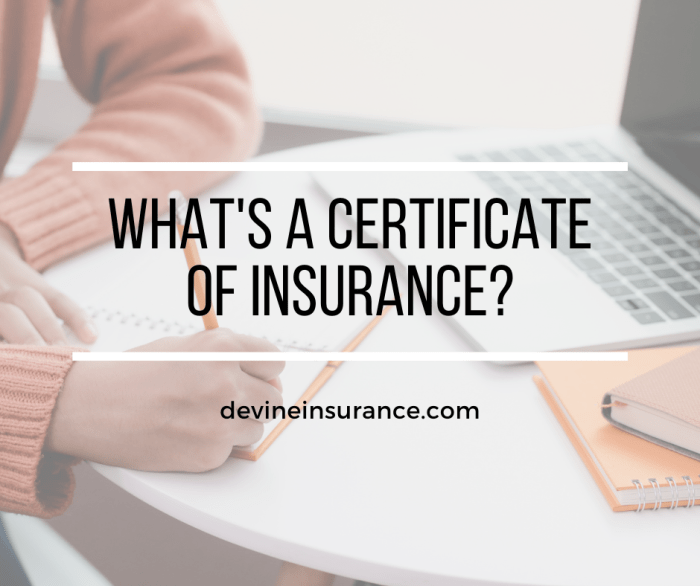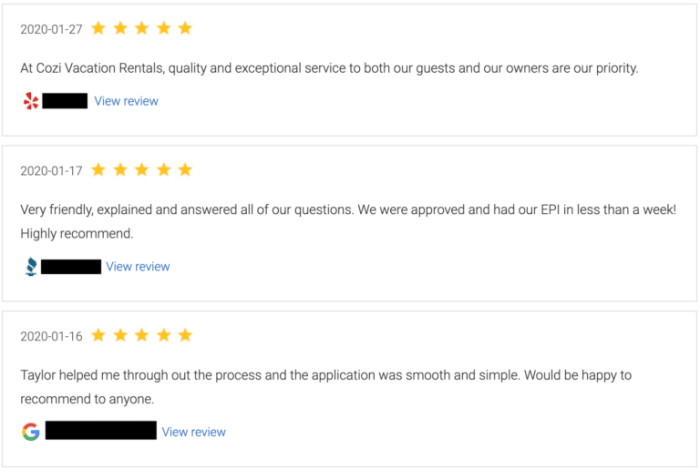In the realm of insurance, understanding and reviewing certificates is crucial for ensuring adequate protection and avoiding potential pitfalls. This guide delves into the intricacies of insurance certificate review, empowering you with the knowledge to navigate policies like a seasoned professional.
Whether you’re a business owner, an individual seeking coverage, or simply curious about the nuances of insurance, this comprehensive exploration will equip you with the skills to decipher policies, identify key elements, and make informed decisions.
Insurance Policy Review

Reviewing an insurance policy is crucial for understanding your coverage, rights, and obligations as a policyholder. It empowers you to make informed decisions and ensure that you have adequate protection against potential risks. This comprehensive guide will equip you with the knowledge and skills to review an insurance policy like a professional, enabling you to identify key elements, terms, conditions, and exclusions that may impact your coverage.
Understanding the Basics of an Insurance Policy
An insurance policy is a legal contract between you and the insurance company. It Artikels the terms and conditions of your coverage, including the types of risks covered, the limits of liability, and the premium you pay. Carefully reviewing the policy ensures that you fully understand the scope of your coverage and any potential limitations or exclusions.
Key Elements to Examine in an Insurance Policy
When reviewing an insurance policy, pay attention to the following key elements:
- Policy Declarations: This section provides essential information about the policy, including the policy number, the name of the insured, the coverage period, and the limits of liability.
- Insuring Agreement: This section Artikels the specific risks or events that are covered under the policy. It defines the scope of your coverage and the circumstances under which the insurance company will provide compensation.
- Exclusions: Exclusions are specific events or circumstances that are not covered under the policy. It is crucial to understand these exclusions to avoid any surprises in the event of a claim.
- Conditions: Conditions are specific requirements that must be met for the insurance coverage to remain valid. These conditions may relate to maintaining the property in good condition, paying premiums on time, or cooperating with the insurance company in the event of a claim.
- Endorsements: Endorsements are amendments or changes to the original policy. They can add or remove coverage, change the limits of liability, or modify other terms and conditions of the policy.
Analyzing Coverage and Exclusions

To review an insurance policy effectively, it’s crucial to understand the coverage it offers and the exclusions that limit it. This section delves into these aspects, providing tips to identify potential gaps and ensure adequate protection.
Types of Coverage
Insurance policies typically offer a range of coverage types, each addressing specific risks and circumstances. Common types include:
- Property coverage: Protects against physical damage or loss to property, such as buildings, equipment, and inventory.
- Liability coverage: Provides protection against legal claims resulting from injuries or damages caused to others by the policyholder or their business operations.
- Business interruption coverage: Compensates for lost income and expenses incurred due to disruptions in business operations caused by covered events.
- Employee benefits coverage: Offers various benefits to employees, such as health insurance, retirement plans, and disability coverage.
Exclusions and Their Implications
Insurance policies also contain exclusions, which are specific circumstances or situations not covered by the policy. Common exclusions include:
- Acts of war or terrorism
- Intentional acts or fraud
- Normal wear and tear
- Catastrophic events like earthquakes or floods (unless specifically covered by an add-on)
Understanding these exclusions is crucial as they can significantly impact the scope of coverage. It’s essential to review them carefully and consider purchasing additional coverage if necessary.
Identifying Potential Gaps
To identify potential gaps in coverage, consider the following:
- Compare the policy’s coverage limits to your actual needs and assets.
- Review the policy’s exclusions and consider if additional coverage is needed to address specific risks.
- Consider changes in your business operations or personal circumstances that may affect your coverage needs.
Regularly reviewing your insurance policies and working with an insurance professional can help ensure that you have adequate coverage and minimize potential gaps.
Assessing Limits and Deductibles

Policy limits and deductibles are crucial elements of insurance policies that determine the coverage provided and the financial responsibility of the policyholder.Policy limits refer to the maximum amount that an insurance company will pay for a covered claim. Deductibles, on the other hand, represent the initial amount that the policyholder is responsible for paying before the insurance coverage kicks in.
Factors Influencing Limits and Deductibles
Several factors influence the selection of policy limits and deductibles, including:
- Asset Value and Coverage Needs: The value of the assets or property being insured and the desired level of coverage play a significant role in determining appropriate policy limits.
- Risk Tolerance and Financial Situation: Policyholders with higher risk tolerance and the ability to cover potential losses may opt for lower limits and higher deductibles to save on premiums.
- Insurance Company and Policy Type: Different insurance companies and policy types may have varying limits and deductible options. It’s essential to compare policies and choose the one that best suits individual needs.
- Regulatory Requirements: In some cases, regulatory requirements may dictate minimum policy limits or deductibles for certain types of insurance.
Strategies for Optimizing Coverage
To optimize coverage while managing costs, consider the following strategies:
- Choose Appropriate Limits: Select policy limits that provide adequate coverage for potential losses while avoiding excessive limits that may lead to higher premiums.
- Set Deductibles Wisely: Higher deductibles can lower premiums, but it’s crucial to choose a deductible that is affordable and does not pose a financial burden in the event of a claim.
- Consider Riders and Endorsements: Riders and endorsements can be added to policies to enhance coverage and tailor it to specific needs. These additions may increase premiums but can provide valuable protection.
- Regular Policy Review: Regularly review insurance policies to ensure that limits and deductibles are still appropriate given changes in circumstances, asset values, or risk profiles.
Evaluating Premiums and Discounts
Premiums and discounts are crucial factors in determining the overall cost of insurance. Understanding how premiums are calculated and the types of discounts available can help you find the best deal for your insurance needs.
Premiums are influenced by various factors, including:
- Risk Factors: Insurers assess the risk associated with insuring you based on factors such as age, health, driving record, property location, and type of coverage.
- Policy Coverage: The amount and type of coverage you choose will impact your premium. Higher coverage limits and additional riders typically result in higher premiums.
- Claims History: A history of claims can increase your premiums, as it indicates a higher risk of future claims.
- Insurance Score: Some insurers use insurance scores to assess your risk. A higher insurance score can lead to lower premiums.
Discounts can help reduce your premiums. Common types of discounts include:
- Multi-Policy Discounts: Insuring multiple policies with the same insurer often qualifies you for a discount.
- Claims-Free Discounts: Maintaining a claims-free record for a certain period can earn you a discount.
- Good Driver Discounts: Safe driving habits, such as avoiding accidents and traffic violations, can lead to discounts.
- Loyalty Discounts: Some insurers offer discounts to customers who remain with them for a specified period.
To find the best deal on insurance, compare premiums from multiple insurers. Consider factors such as coverage, discounts, and customer service. Online comparison tools and insurance agents can assist you in this process.
Understanding Riders and Endorsements

Riders and endorsements are additional provisions or amendments added to an insurance policy to modify or extend its coverage. They allow policyholders to customize their insurance plans to meet specific needs or circumstances.
Purpose and Benefits of Riders and Endorsements
Expanded Coverage
Riders and endorsements can broaden the scope of coverage provided by the base policy, ensuring comprehensive protection against specific risks or situations.
Tailored Protection
They enable policyholders to tailor their insurance plans to suit their unique requirements, ensuring coverage for specialized needs or high-risk activities.
Flexibility
Riders and endorsements offer flexibility in adjusting coverage as circumstances change, allowing policyholders to add or remove them as needed.
Selecting Appropriate Riders and Endorsements
Assess Needs
Carefully evaluate your specific needs and risks to determine which riders or endorsements are necessary for adequate protection.
Review Policy
Thoroughly read your insurance policy to understand the existing coverage and identify any gaps that need to be filled.
Consult an Insurance Agent
Consult with an experienced insurance agent or broker to discuss your requirements and obtain recommendations for suitable riders or endorsements.
Consider Cost-Benefit
Evaluate the cost of the riders or endorsements against the additional coverage and benefits they provide to ensure a cost-effective choice.
Reviewing Claim Procedures

Understanding the claim procedures Artikeld in an insurance policy is essential for ensuring a smooth and successful claim settlement. These procedures typically involve a series of steps that policyholders must follow to initiate, document, and submit their claims.
To maximize the chances of a successful claim settlement, policyholders should:
1. Familiarize Themselves with the Policy’s Claim Provisions
Policyholders should carefully review their insurance policy’s claim provisions, including the specific steps involved in filing a claim, the required documentation, and any time limits or restrictions.
2. Document the Loss or Damage
Policyholders should promptly document the loss or damage, taking photos, videos, and detailed notes. They should also keep receipts, invoices, and other relevant documentation related to the loss.
3. Notify the Insurance Company
Policyholders should promptly notify their insurance company about the loss or damage, either by phone, email, or through an online claims portal. They should provide the necessary information, such as the policy number, date of loss, and a brief description of the incident.
4. Submit a Formal Claim
Policyholders should submit a formal claim form to their insurance company, providing detailed information about the loss or damage, including the date, time, location, cause, and extent of the loss. They should also attach supporting documentation, such as photos, videos, receipts, and estimates.
5. Cooperate with the Insurance Company’s Investigation
Policyholders should cooperate with the insurance company’s investigation into the claim, providing any additional information or documentation requested. They should also be prepared to answer questions and provide statements about the loss or damage.
Identifying Red Flags and Warning Signs

Scrutinizing an insurance policy is like being a detective, searching for clues that may indicate potential pitfalls or areas of concern. These red flags and warning signs serve as crucial indicators that warrant further investigation and action.
Ignoring these red flags can lead to severe consequences, including inadequate coverage, unexpected claim denials, or exorbitant premiums. Therefore, it’s essential to address these concerns promptly and negotiate favorable terms to ensure comprehensive protection and peace of mind.
Common Red Flags
- Vague or Ambiguous Language: Unclear or open-ended policy wording can lead to disputes and differing interpretations during claim settlements. Ensure the policy language is precise, straightforward, and easily understandable.
- Limited Coverage: Some policies may have significant exclusions or limitations that restrict coverage in specific situations. Carefully review the policy to identify any gaps or areas where coverage may be inadequate.
- High Deductibles and Premiums: Unusually high deductibles or premiums compared to similar policies in the market may indicate potential issues or hidden costs. Investigate the reasons behind these discrepancies and consider alternatives if necessary.
- Unfavorable Claim Settlement History: Research the insurer’s track record in handling claims. A history of delayed or denied claims can be a red flag, indicating potential difficulties in obtaining fair settlements.
- Lack of Transparency: If the insurer is reluctant to provide clear explanations, detailed policy information, or claim procedures, it raises concerns about their transparency and commitment to customer service.
Strategies for Addressing Concerns
- Seek Clarification: If you encounter ambiguous language or unclear terms, request written clarification from the insurer. Ensure you have a clear understanding of the policy’s coverage, exclusions, and conditions.
- Negotiate Favorable Terms: If you find unfavorable terms or conditions, don’t hesitate to negotiate with the insurer. Depending on your situation and bargaining power, you may be able to secure better coverage, lower premiums, or more favorable claim settlement procedures.
- Consider Independent Advice: If you’re unsure about the policy’s implications or have complex coverage needs, consult an independent insurance advisor or attorney. They can provide expert insights and help you make informed decisions.
- Document All Communications: Keep a record of all communications with the insurer, including emails, phone calls, and written correspondence. This documentation can be invaluable in case of disputes or claims.
Seeking Professional Advice

Consulting an insurance professional or agent offers numerous advantages. They possess specialized knowledge and expertise in navigating the intricacies of insurance policies, enabling them to provide tailored guidance and support. Insurance professionals can help you comprehend complex policy provisions, identify coverage gaps, and recommend suitable endorsements or riders to enhance your protection.
They remain updated on the latest industry trends, regulatory changes, and product offerings, ensuring you receive the most relevant and up-to-date advice.
Situations Warranting Professional Advice
Seeking professional advice is particularly crucial in certain situations. If you’re purchasing insurance for the first time, an insurance professional can guide you through the process, explaining different policy types, coverage options, and exclusions. They can also assist you in determining the appropriate coverage limits and deductibles that align with your specific needs and budget.
Moreover, if you’re facing a complex insurance claim, an insurance professional can advocate on your behalf, ensuring your claim is handled promptly and fairly.
Finding a Reputable Insurance Professional
Selecting a reputable and knowledgeable insurance professional is essential. Consider seeking recommendations from friends, family members, or colleagues who have had positive experiences with insurance agents. You can also research online review platforms to gather insights into different professionals’ reputations and services.
Additionally, ensure that the insurance professional is licensed in your state and holds the necessary credentials and certifications.
Summary

Mastering the art of insurance certificate review is a valuable skill that empowers you to protect your interests, optimize coverage, and make informed decisions. By following these eight essential tips, you can navigate the complexities of insurance policies with confidence, ensuring that you’re adequately covered and prepared for any eventuality.
Q&A
Question: What are some common red flags to watch out for when reviewing an insurance certificate?
Answer: Red flags may include vague or overly broad language, exclusions that significantly limit coverage, excessively high or low premiums compared to market standards, and a lack of clear definitions for key terms.
Question: How can I find a reputable and knowledgeable insurance professional to assist me with reviewing a certificate?
Answer: Seek recommendations from friends, family, or colleagues who have had positive experiences with insurance professionals. You can also research online review platforms or contact your state’s insurance regulatory agency for a list of licensed professionals in your area.
Question: What are some strategies for optimizing coverage while managing costs when selecting policy limits and deductibles?
Answer: Consider your risk tolerance and financial situation when choosing limits and deductibles. Higher limits provide more comprehensive coverage but may result in higher premiums. Conversely, lower limits reduce premiums but may leave you exposed to financial risk in the event of a claim.
Finding a balance that aligns with your needs and budget is essential.



